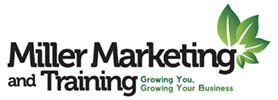Make The Most Of Your First Visit
“There must be a better way,” I remember thinking to myself in the early days of my selling career as I left an initial meeting with a new prospect. My first meetings were usually very short and not too productive. After a pleasant greeting, I would say that I didn’t really need to meet with him yet, but that after I had all “my” ideas together, I’d get back to him. Go ahead and laugh. I was young and green, besides I had no idea there was another way to handle the first meeting. There is a better way.
Most of our sales calls in the interiorscape business will consist of a “two-call” sales process, meaning that, like an insurance salesperson, we must first meet with our prospect to determine exactly what his or her specific needs are before we can prepare an effective proposal of our services. Then we meet a second time with proposal in hand and give our presentation.
Unless we are doing a materials take off from a set of blueprints, we are meeting our client at his place of business. Even though we probably won’t leave with a signed contract, there is very important selling going on there. We should keep in mind that “everything is selling.” Since we never get a second chance to make a first impression, our initial meeting with our prospect should be a positive one.
Include Account Evaluation Sheets
Be prepared with all of your information-gathering tools. When I meet with a prospect the first time, I use a new account evaluation sheet. It’s simply a form with all of the pertinent information about a prospect and his or her place of business. There is nothing more frustrating than getting back to the office and forgetting a color scheme or a ceiling height or some other important detail. By using this form, you get all the details the first time and impress your prospect with your interest in him or her.
While we probably won’t close the sale at this first meeting, the things we do to prepare and do during the meeting will certainly lay the foundation for a closed sale on the second call. Three positive things we can do during the first sales call include: relationship building, preparing “Why Meet” statements and gather information.
Building Relationships is Natural
The salesperson who will tell his prospect anything it takes to make the sale and who things selling is just a one-time deal will never build a solid base of loyal customers. Especially in our industry, the close of a sale marks the beginning of a relationship. “Relationship building” is the foundation of most sales training in the 1990s. This kind of training teaches you how to be a trusted “consultant” to a buyer and also how to be a person who seeks to know his or her clients and their specific needs. This relationship building can begin the first time we meet a new prospect.
Everything about us in that first meeting must say to our prospect, “I am your friend and I’m here to help you. I am a processional in my industry, and I want to use my experience to solve your problems. You can trust what I say because I sincerely have your interest in mind.”
This attitude obviously can’t be “faked.” It comes easily, though when we really do have our prospect’s best interests in mind. Our prospects will pick up on this genuine interest from many things. It comes from the smile that greets them the first time (a real, heart-felt smile or a forced one) to the questions we ask them about their specific needs. (More on that in a minute.)
How you begin to establish rapport and build a relationship with your client will depend a great deal on your own individual personality. However, being aware of our client and his or her surroundings is crucial to the process. This awareness includes our client’s personality styles and their office or business environments. Is this the kind of person who likes to “visit” a few minutes first, or does he want to get right down to business? Is there an item or award in the office that would lend itself to a sincere compliment?
A sales trainer I know warns not the talk about the “fish trophy” on the wall. Everybody asks about the fish. “Duhhh, did you catch that fish?”
Can you see something about your prospect or the company that you sincerely admire, and can you tell them so in a genuine and professional way? That’s relationship building, and it’s the first step of an effective sales call.
“Why Meet” Statements Make Sense”
The second step is a powerful technique I learned from the Dale Carnegie Sales Training Course (which is, I feel, one of the best investments of time and money you can make in your sales career). The technique is called “why meet” statements. Why meet statements are designed to take you smoothly form the initial pleasantries into the purpose of your call. They are the transition from the conversation, allowing you to set the agenda for your meeting. A typical why meet statement contains:
- A specific customer benefit related to the meeting itself
- An overview or agenda of the meeting (either verbal or in writing)
- A question asking permission to proceed to the agenda’s first point.
Before using this technique, I would go into a prospect’s office and basically “wing it.” I had no strategy for finding out what my prospect’s needs were, or worse, what really mattered. I would just talk away about me and my company and answer my prospect’s questions. Now, with this technique, I’ve learned to talk about my prospect and his company. I’m the one asking the questions, a major difference! An example of a why meet statement for an interiorscape prospect would look like this:
Step One:
“Our meeting today will help me determine how our interiorscape services can be best tailored to meet your specific needs. By asking you a few questions, ill be able to custom design a plant program that will not only create a pleasing work environment, but will help reduce harmful air pollutants.”
Step Two:
“The items I suggest we cover in our meeting would be:
- Traffic flow in your office
- Specific plant likes or dislikes
- The type of decorative containers that best fit your décor and budget
- Specific service times or days that are inconvenient for service calls
- And, finally, what is the most important aspect our service offers you?
Step Three:
“May I cover these points briefly to get a better feel for your present situation?”
By using this three-step approach, you not only appear professional, but most importantly, you maintain control of the initial sales call. The why meet statements act as a bridge that takes you to the most important information-gathering step.
Gathering Information Means Inquiry
Recall the last time you met with a “professional.” It could have been a doctor, a lawyer or a certified public accountant. What is the one thing these professionals do to give you confidence in their abilities? By doing this one thing, you would know immediately the person is qualified and has unique knowledge to help solve your problem. That one thing is asking questions.
Whether we are meeting with a doctor or a CPA, we know they will begin by asking questions to reveal our present condition and challenges. Our confidence in them grows as we realize he or she understands our unique situation.
The analogy to the sales professional should be obvious. We can instill confidence in our prospects simply by asking questions that show we are interested and want to help with their problem. As interiorscape sales professionals, we help people solve this problem. But each person and his or her situation is different, so we ask questions to find out how we can best serve them.
The information we gather not only helps us in preparing an effective proposal, but just as important, it helps us on the second sales call when we give our presentation. For example, a very powerful questions I ask is, “What would you say is the most important aspect of our live plant services to you, Mrs. Johnson?” She answers, “I want to be sure that all of our plants are always clean. That jut really irritates me to see dust on the plants.”
Now, armed with the valuable information, I would emphasize our plant-cleaning technique in my proposal and maybe give her a live demonstration when I give my presentation.
Asking questions should be at the core of our professional selling skills. If you’ve never tried it before, be patient, as it will take some time to change. It will also take concentrated effort and a desire to be a better salesperson. However, the results you enjoy will astound you as you lean that “selling is not telling, asking questions is.”
These three technique for the first sales call will not only help you establish rapport from that very first meeting, they will give you tons of valuable information to write a winning interiorscape proposal. That is the topic of my next article.





